We woke up early in Buenos Aires to catch the ferry to Uruguay, and after a long (but pretty) chain of ferry, bus, and taxi we arrived to our Airbnb in Montevideo late in the afternoon. Our host recommended a market with good restaurants, and off we went to catch our first meal since an early breakfast.
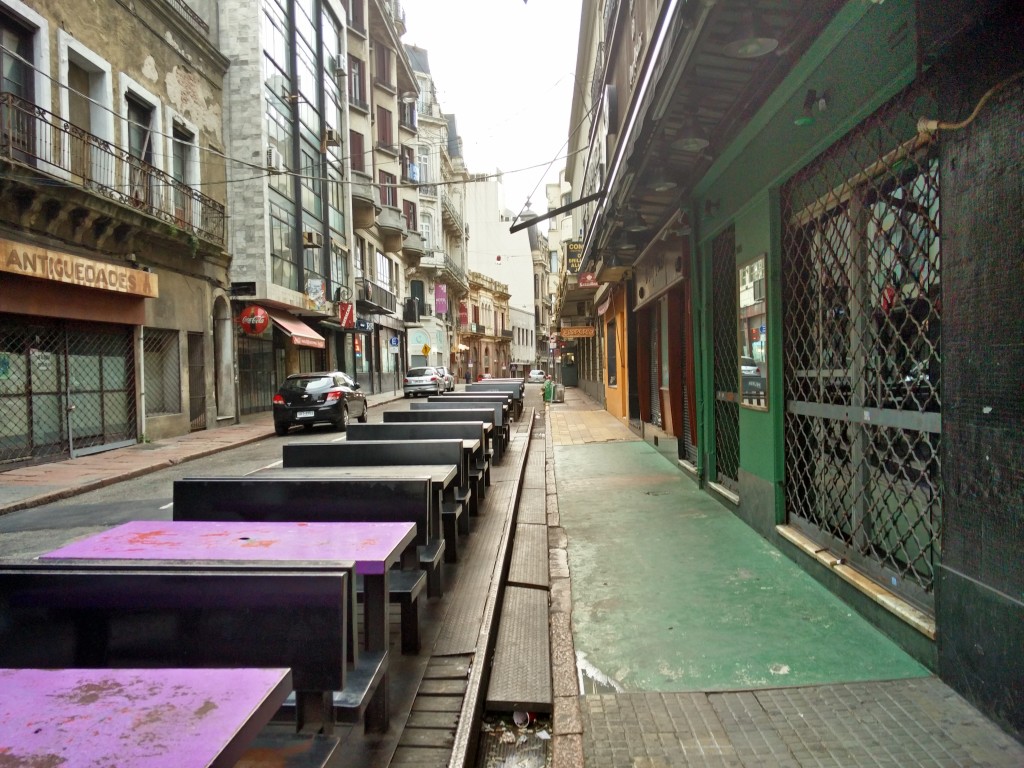
This was the first of many long and frustrating restaurant-searching expeditions in Uruguay — nearly everywhere (including the market our host had recommended) was closed. In this case it was Sunday, but we largely found odd hours, wrong TripAdvisor profiles, and other impediments to accessible tasty food to be the norm in Uruguay for some reason.
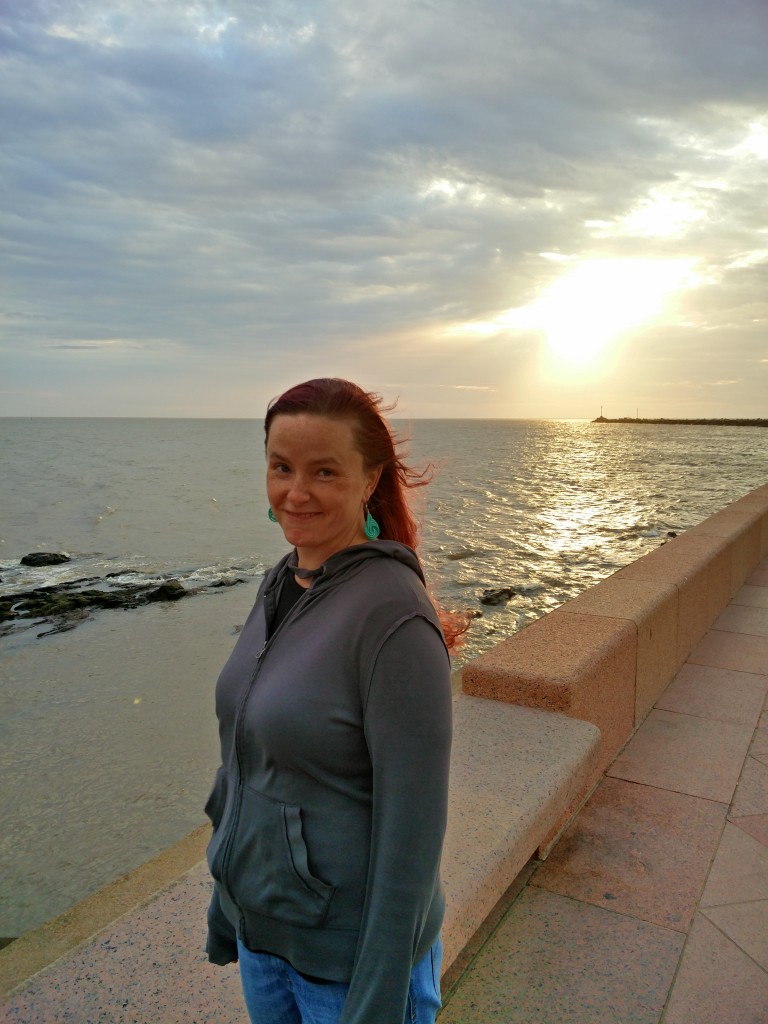
After a lot of walking, including a beautiful sunset along the Ramblas, we finally found a bar/restaurant that was still open, and tried the famous Chivito — a steak sandwich with ham, prosciutto, cheese, eggs, onions, olives, tomatoes, pickles, lettuce, and a few other ingredients we can’t remember.
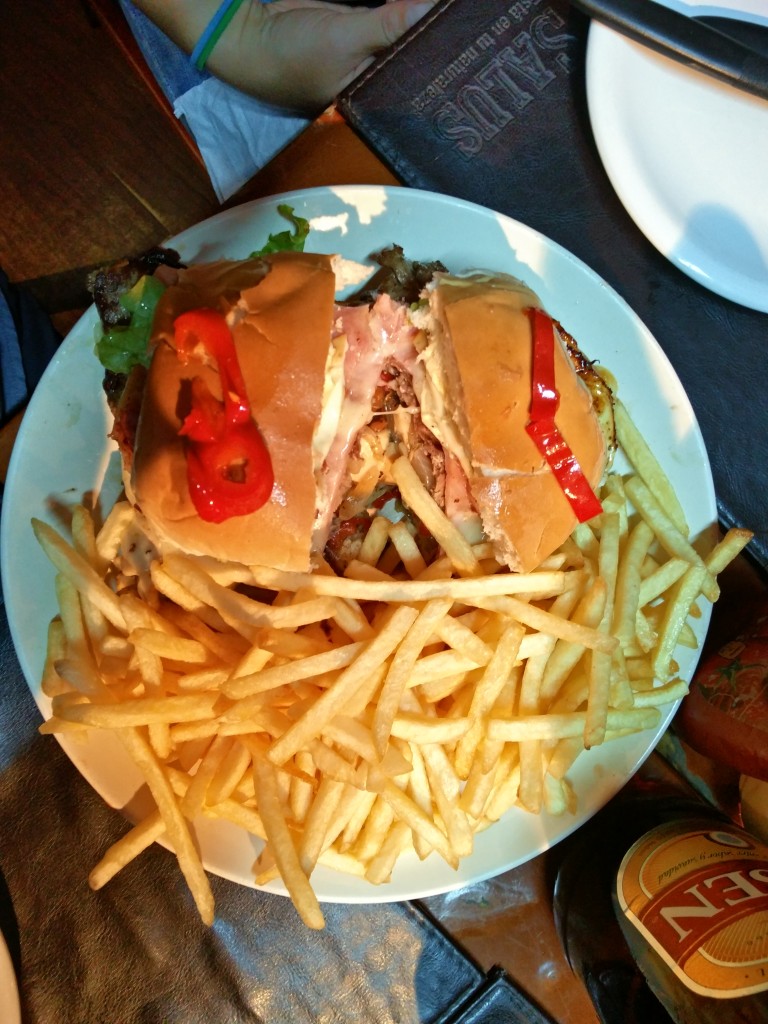
The look was more impressive than the taste, but it got the job done.
Like Buenos Aires, Montevideo was covered in lots of interesting graffiti:
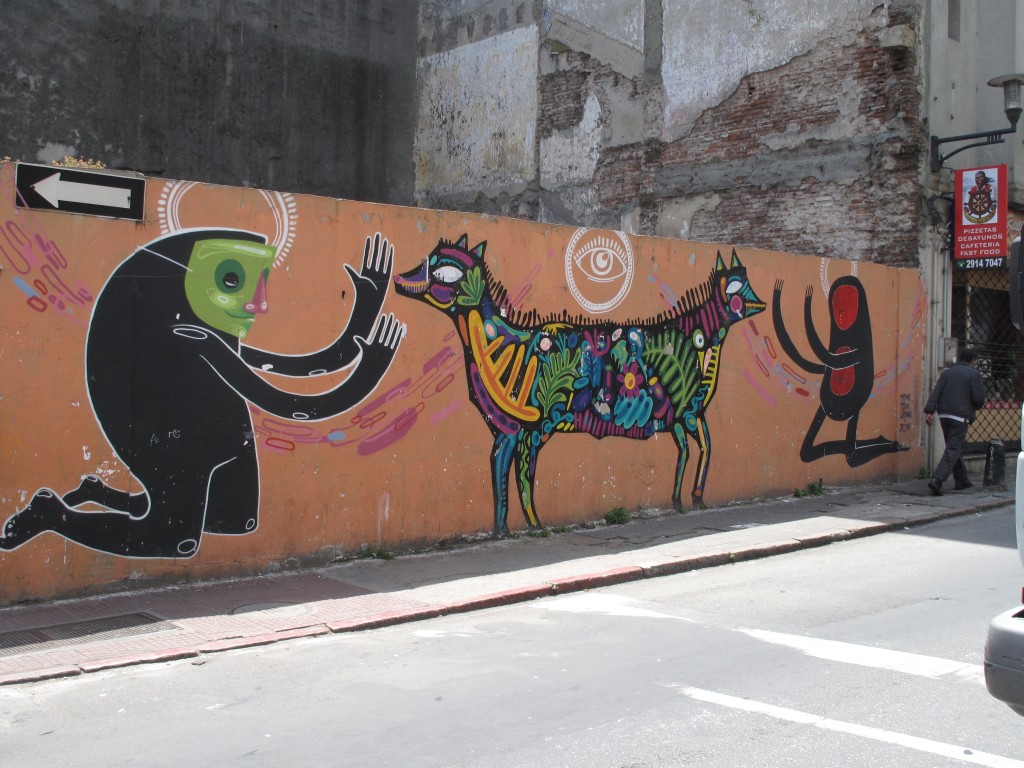
and, to an even greater degree, was full of maté:
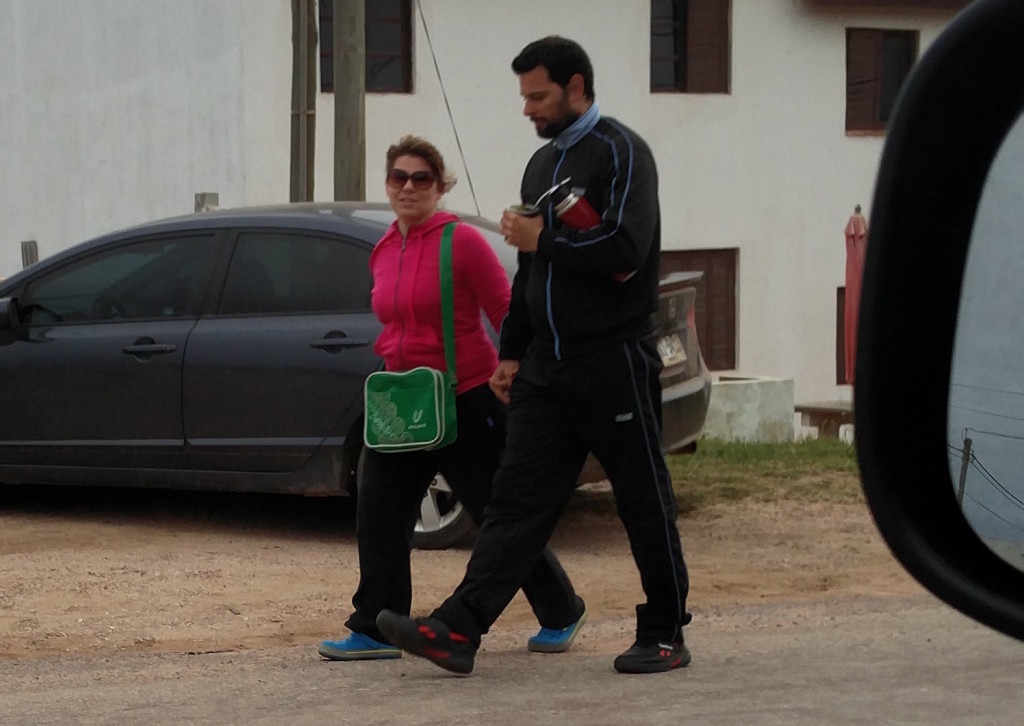
Everywhere we went in Uruguay, at any time of day or night, it seemed like at least one person in every group of Uruguayans was sporting this fashion: a traditional maté gourd in one hand, with an accompanying thermos of hot water in the crook of the arm.
We really wanted to try the maté, but despite its ubiquity, it’s not on the menu at any restaurants (I guess everyone who wants it is already carrying a gourd and thermos). This was easily solved by a trip to a street vendor and the grocery store, after which we had our own cup brewing, the first of many.
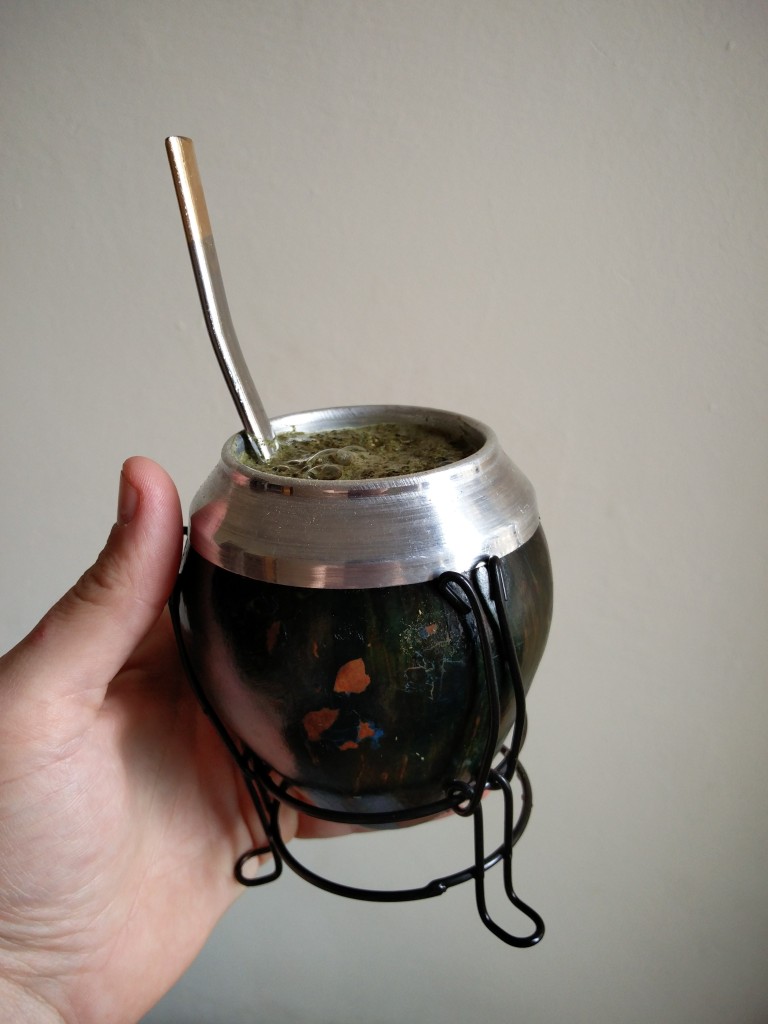
As we were checking out, our Airbnb host saw our gourd and got really excited. He told us about some of the customs surrounding maté: if a group of friends are planning to meet up, someone will always offer to bring the maté; it’s traditionally drunk socially, and offering your cup to someone can be a strong gesture of friendship (and vice-versa). It’s so ingrained in the culture, we even found this maté children’s play set.
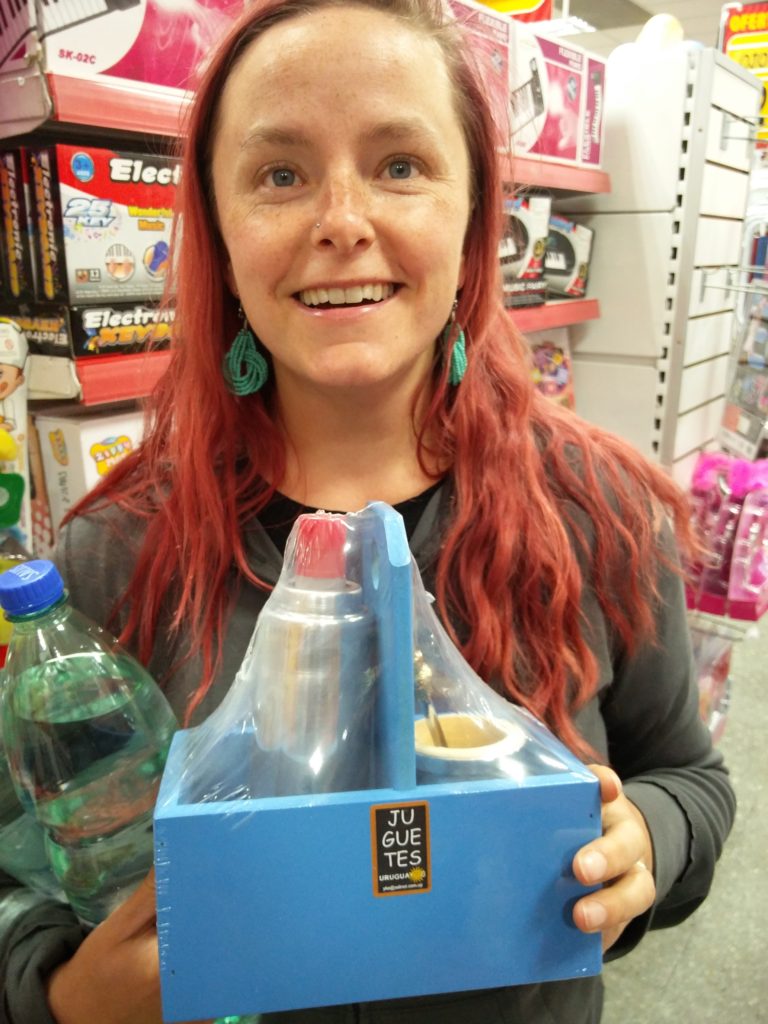
Our main event in Uruguay was to be driving up the coast and visiting the myriad beach towns along the way, as many friends had recommended. We rented a car online for only $15/day, and it turned out to be brand new: just 9 km on the odometer when we sat inside.
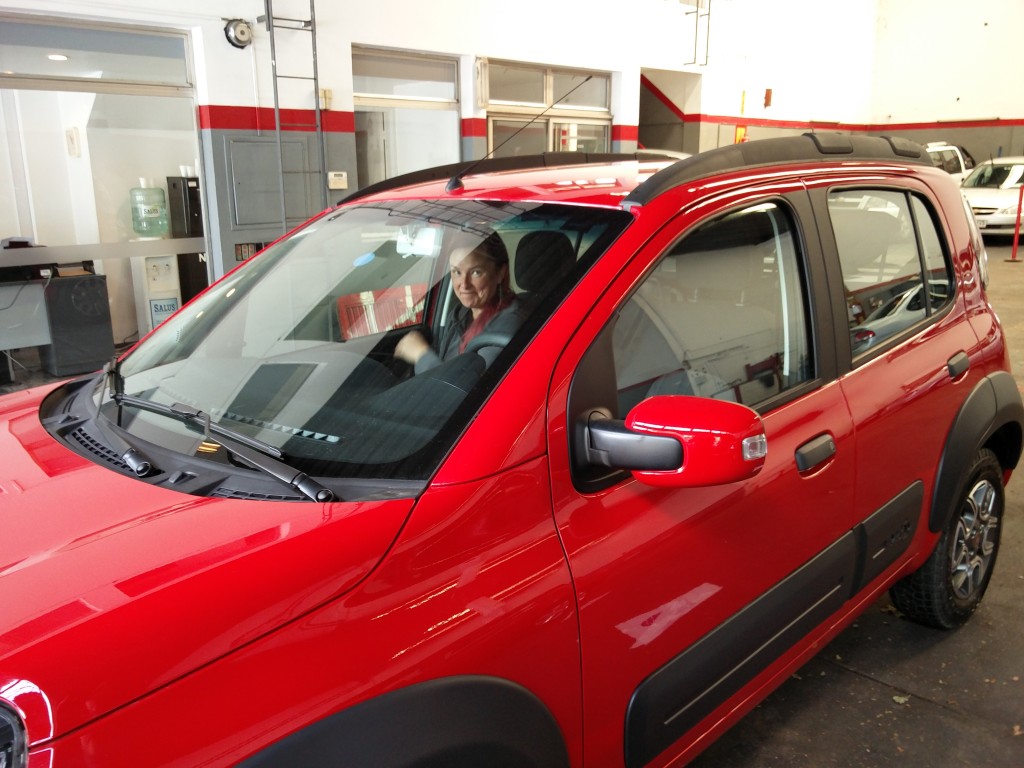
Our first stop was Punta del Este, a beautiful beach town famous for its La Mano sculpture created by artist Mario Irarrázabal (who also built similar sculptures in the Atacama Desert, Madrid and Venice). It is meant to represent a hand drowning, as a warning to swimmers of the rough waters.
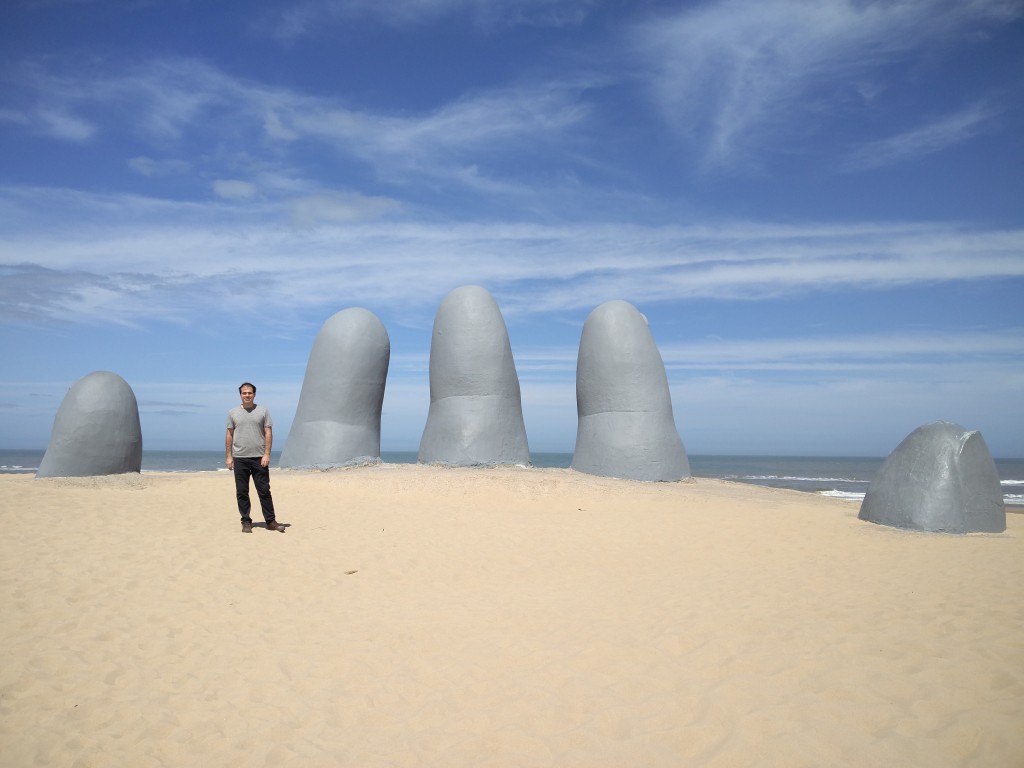
Its nightlife is also legendary: according to Tripadvisor,
… the nightlife is known internationally for its exclusivity and if travelers are not on a list or not ‘in the know’ or not incredibly naturally endowed with beauty, they might find it difficult to get past the red-ropes or grand gates to the hottest night spots.
We checked into our Airbnb, which had fantastic views of the beaches on both sides of the peninsula:

and after some work and planning, headed out to grab some grub and see if we could sneak into any of this fabulous nightlife we’d been reading about.
At this point, we should probably jump back a bit, to what our host told us as we were leaving Buenos Aires. He grew up in the States before moving to South America, and described Uruguay to us as “Argentina’s Canada.” Uruguay itself only has about 3 million residents, but its beautiful beach towns balloon with tourists from Argentina and elsewhere in the summer months, especially during the December and January holidays.
While October-November is technically the start of the tourist season, as it got dark in Punta del Este and only one or two lights went on in each 20-story hotel and apartment building, we realized that things hadn’t really gotten going yet. 30 minutes of wandering later, we finally found the only open restaurant, had a quick meal, and enjoyed the views of the empty beaches and streets from our apartment while falling asleep watching the Godfather.

While a bit inconvenient in Punta del Este, the overall emptiness came in handy on the rest of Uruguay travels. This was especially true in our next stop, José Ignacio — the best spot in Uruguay to learn kitesurfing (which was high on Jason’s list of things to do on the trip) — but also apparently the “chicest spot in Latin America” (according to NYT) where we heard everyone too rich or snobby for Punta del Este has moved. Despite its reputation, we found José Ignacio to be a beautiful and rustic place, and thanks to the timing we were able to find a really nice place to stay for a reasonable price.
We did two days of Kitesurfing lessons with Laura, which was an awesome introduction to the sport. This picture shows what newbies we were when we started:
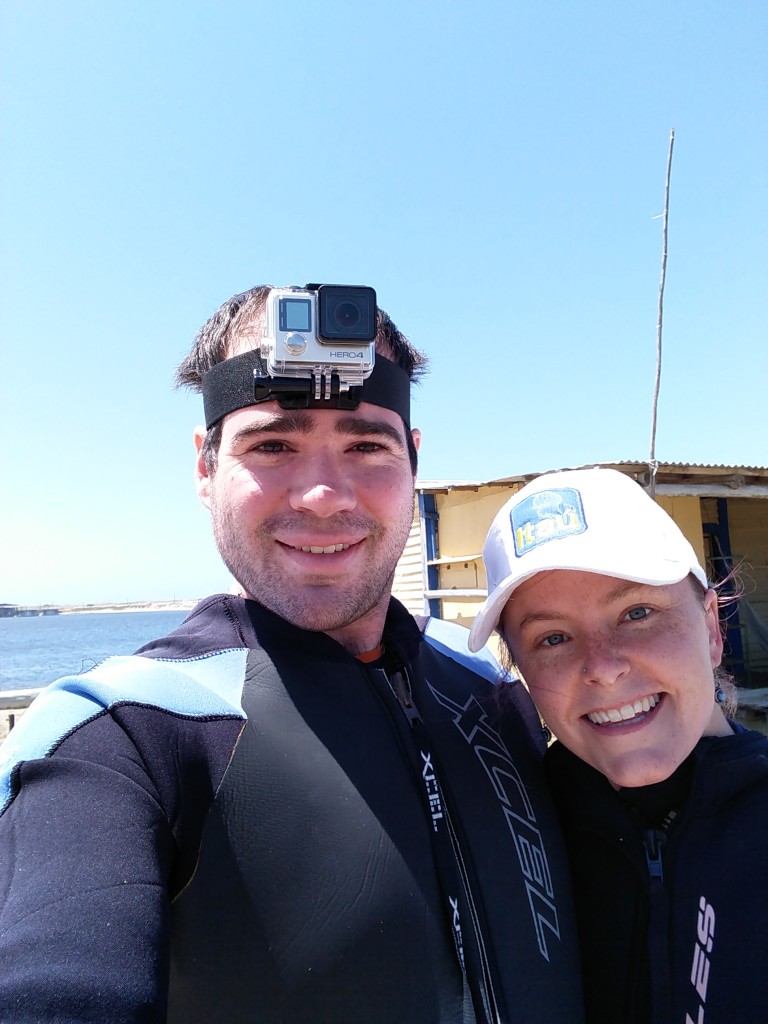
(We put our wetsuits on backwards!). But by the end of the second day, we were “body dragging,” flying the kite in little movements off to one side to drag us through the water lateral to the wind direction.
From our second lesson, we headed straight to Cabo Polonio, the spot that everyone said we had to check out if we were going to Uruguay. It’s a small village inside a national park, which has no private cars, cell service, or electricity. To get there, you have to park 5 or so miles away and take a funny double-decker mega-jeep bus into town.

When we arrived at 6pm, the next jeep wasn’t until 8 and we didn’t yet have a place to stay (only a few options were available online, and they were all extremely pricey), so we decided to take the scenic hike through the grasslands and dunes instead.
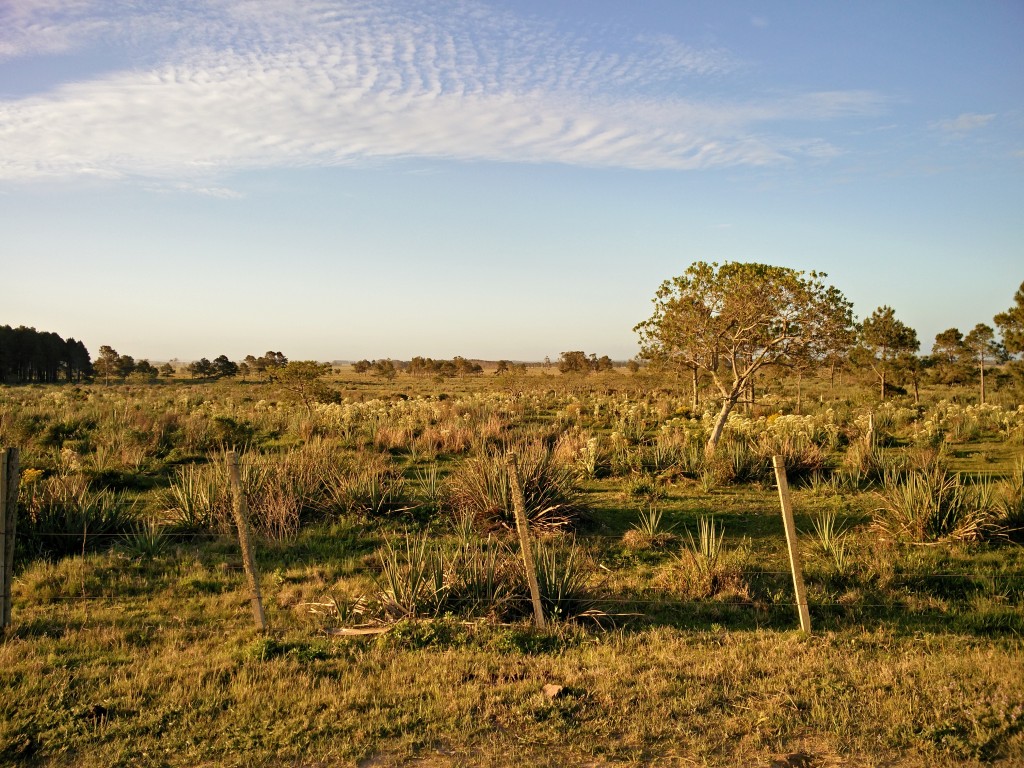
By the time we arrived in town it was just getting pitch-dark outside, and we were a bit worried about finding a room. We stopped at the first (and only?) small market in the town, bought a bottle of wine, and asked the cashier if he knew of anywhere we could stay. Next thing we knew, he was walking us to his nearby cabin, which was very nice, cheap, and (as expected) electricity-free:
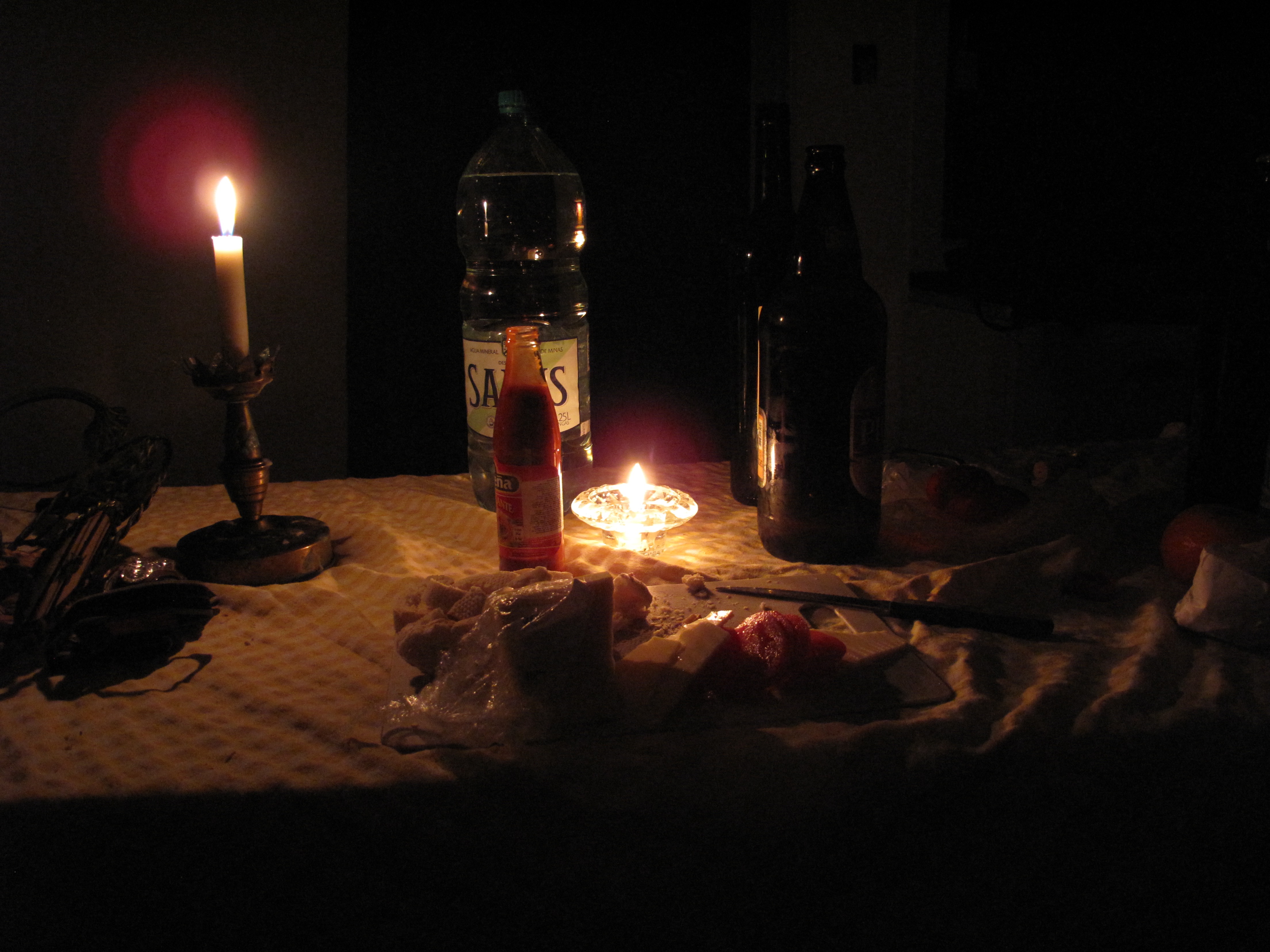
After settling in, we wandered around the town in the dark for a little while, before happening upon a sign lit by candlelight advertising a bar a hundred feet off the path. The hosts invited us in, and we spent the rest of our Halloween evening hanging out with the really great group of Uruguayan folks inside. In many ways, the setting reminded us both of Burning Man.

The next morning, we got our first glimpse of the city in daylight. It’s a bit hard to describe how interesting and different it is — there are a few roads and paths, but mostly it consists of houses seemingly randomly plopped down across the landscape, and it’s totally unclear where one property begins and another ends.
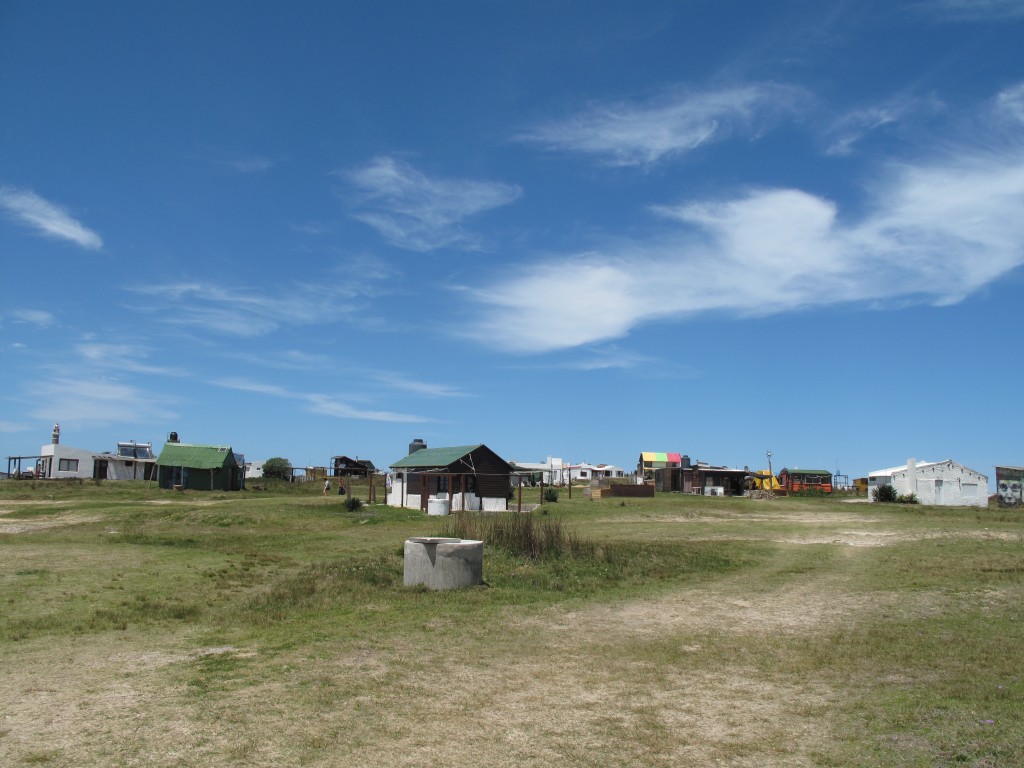
We did some more exploring, walking around the lighthouse in the center of town (the only building with access to the municipal electricity, as far as we could tell) and checking out the huge colony of sea lions that lives on the tip of the cape.
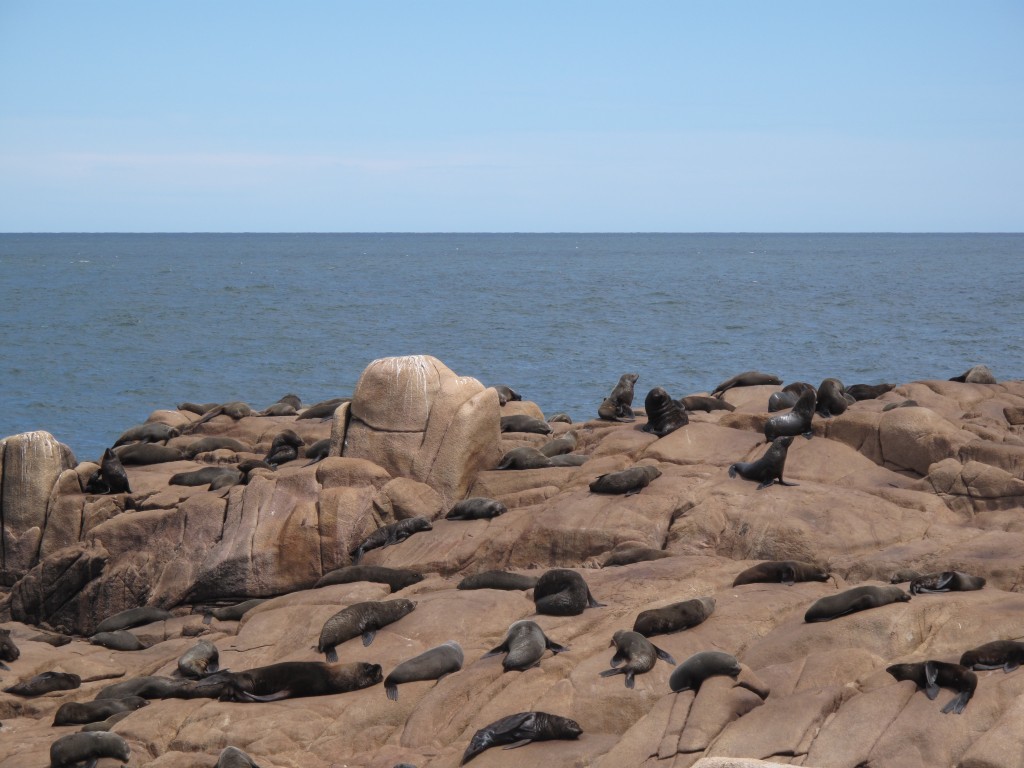
After hiking back out and driving nearly to the Brazilian border, we reached Punta del Diablo, our last stop in Uruguay. We mostly took it easy there, as Sarah had picked up a nasty cold and needed some time to recover.
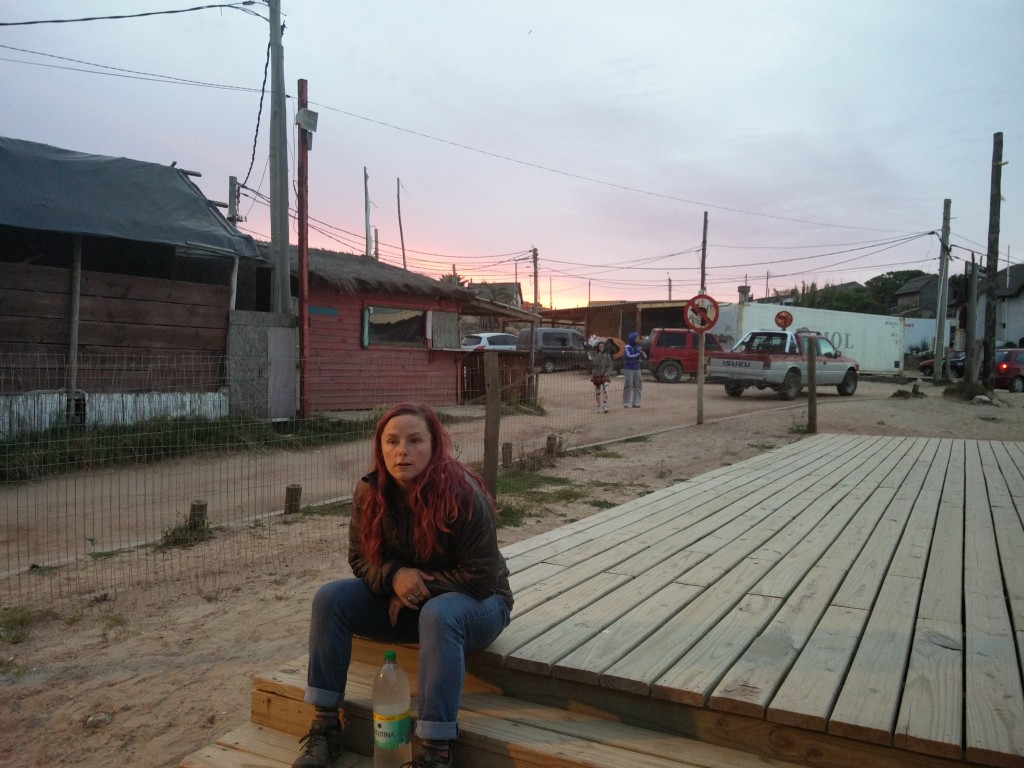
The next day we drove all the way back to Montevideo, and then to the airport, where we “indulged” in our first McDonald’s of the trip:
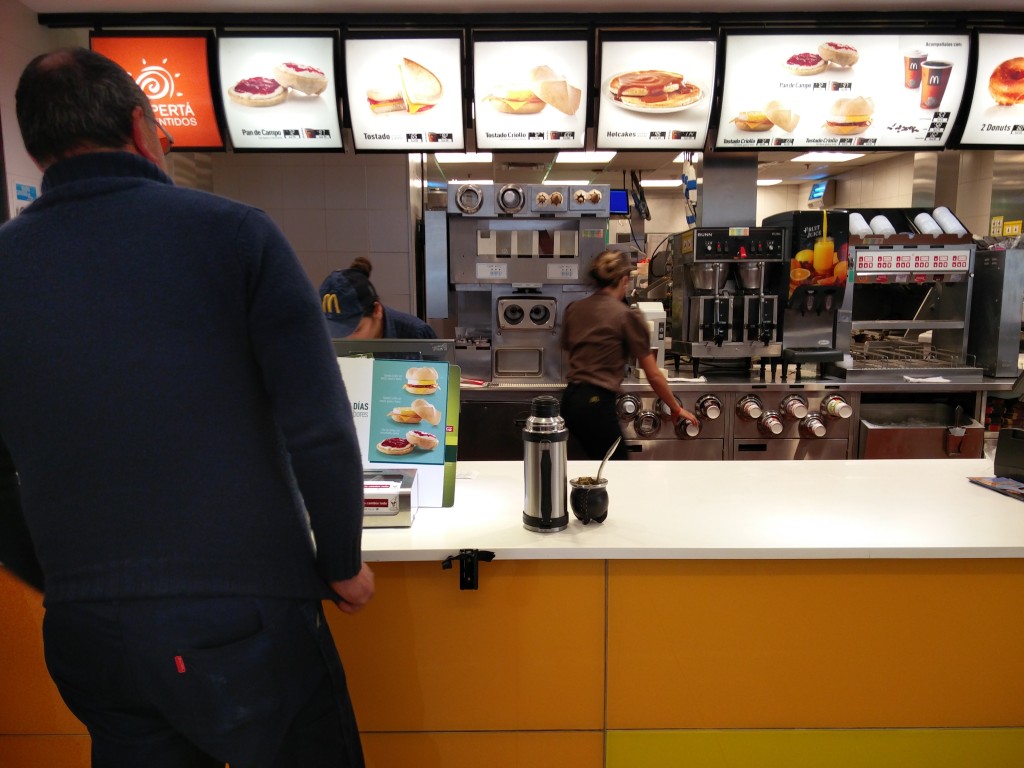
before hopping on a flight to El Calafate in Argentina’s Pagatonia!


